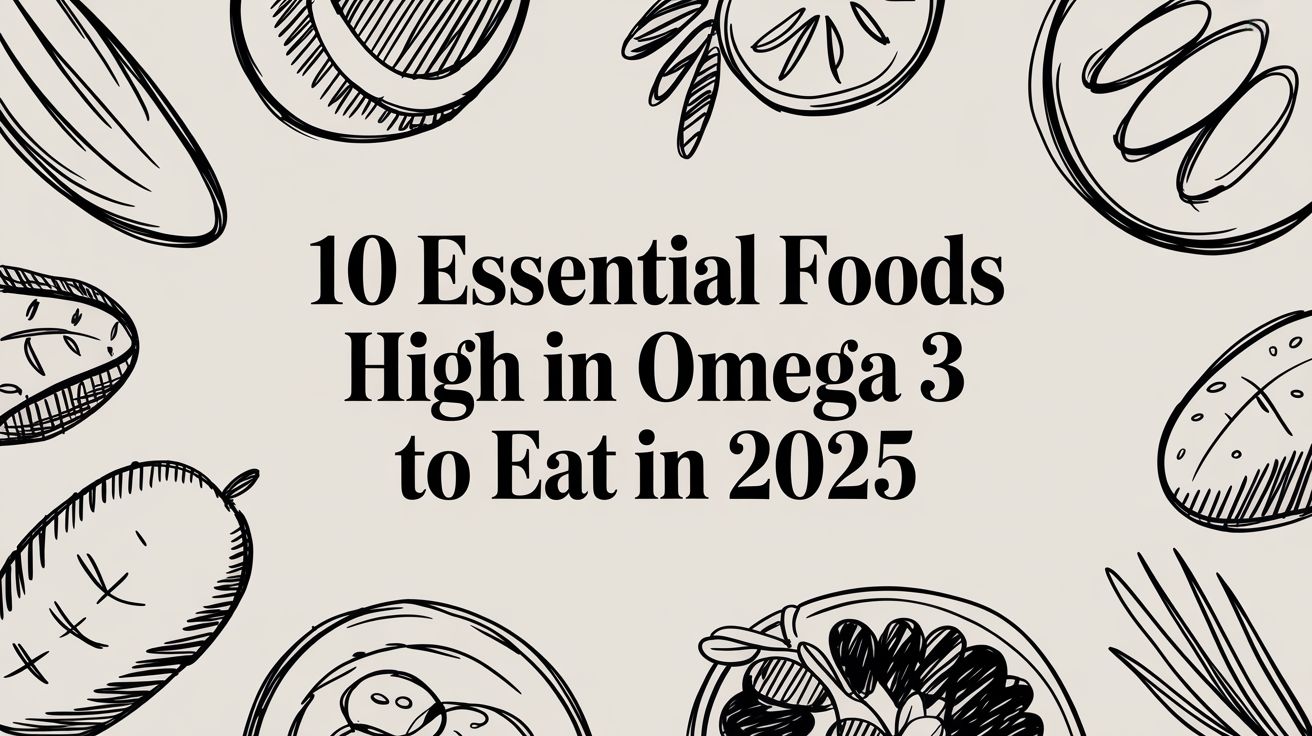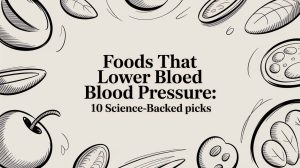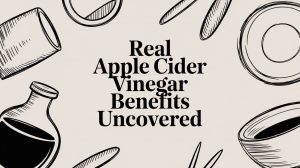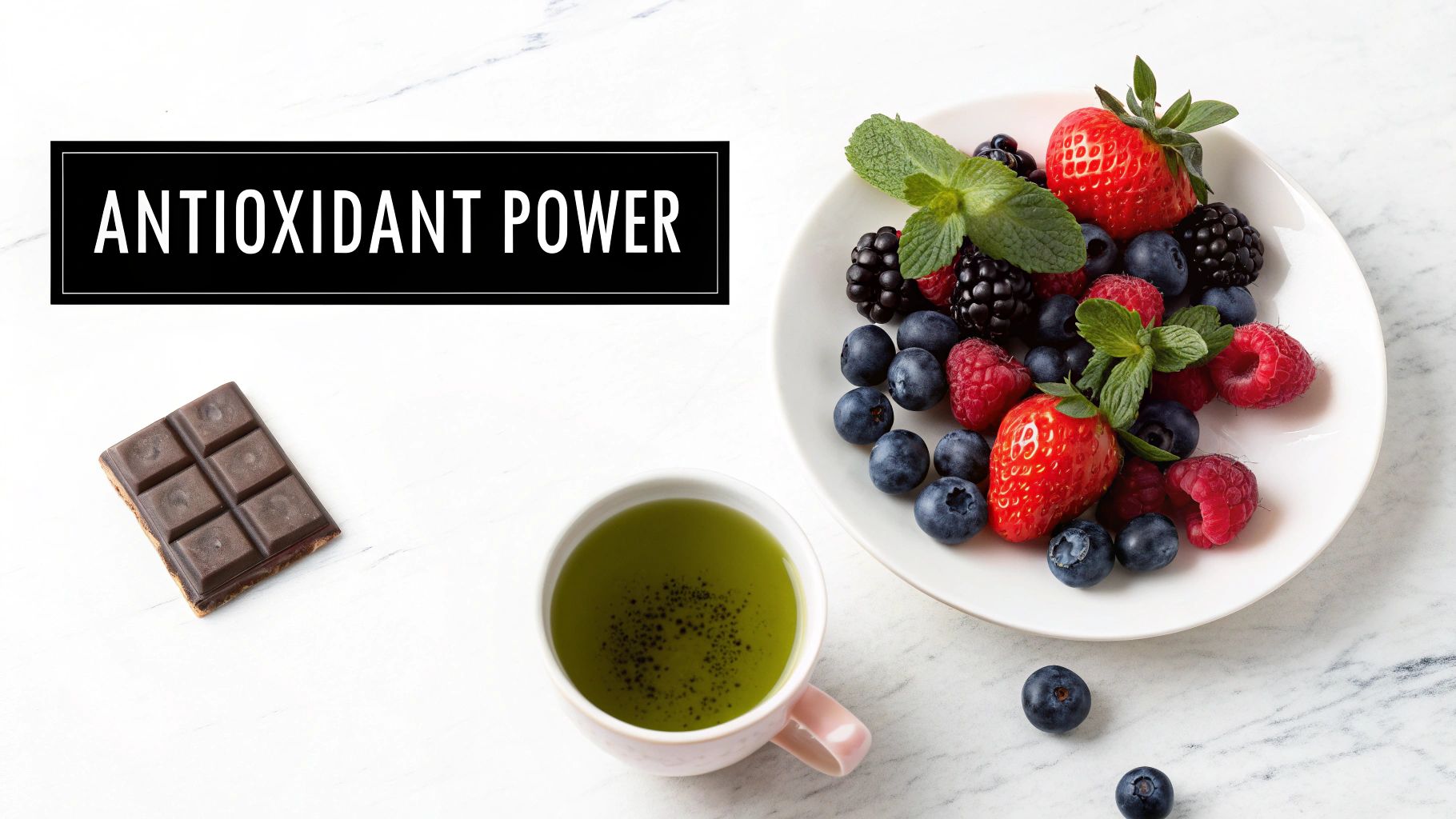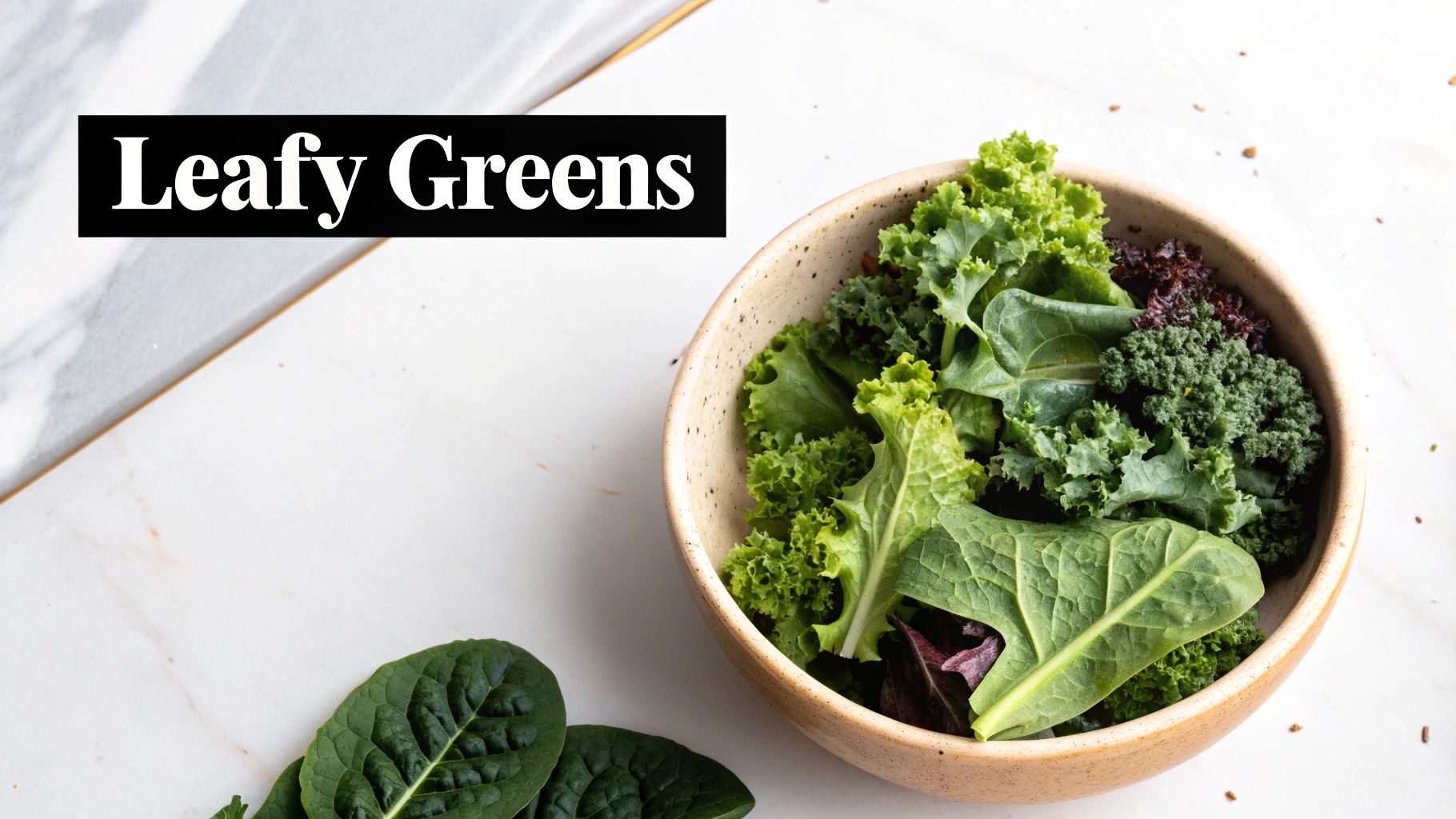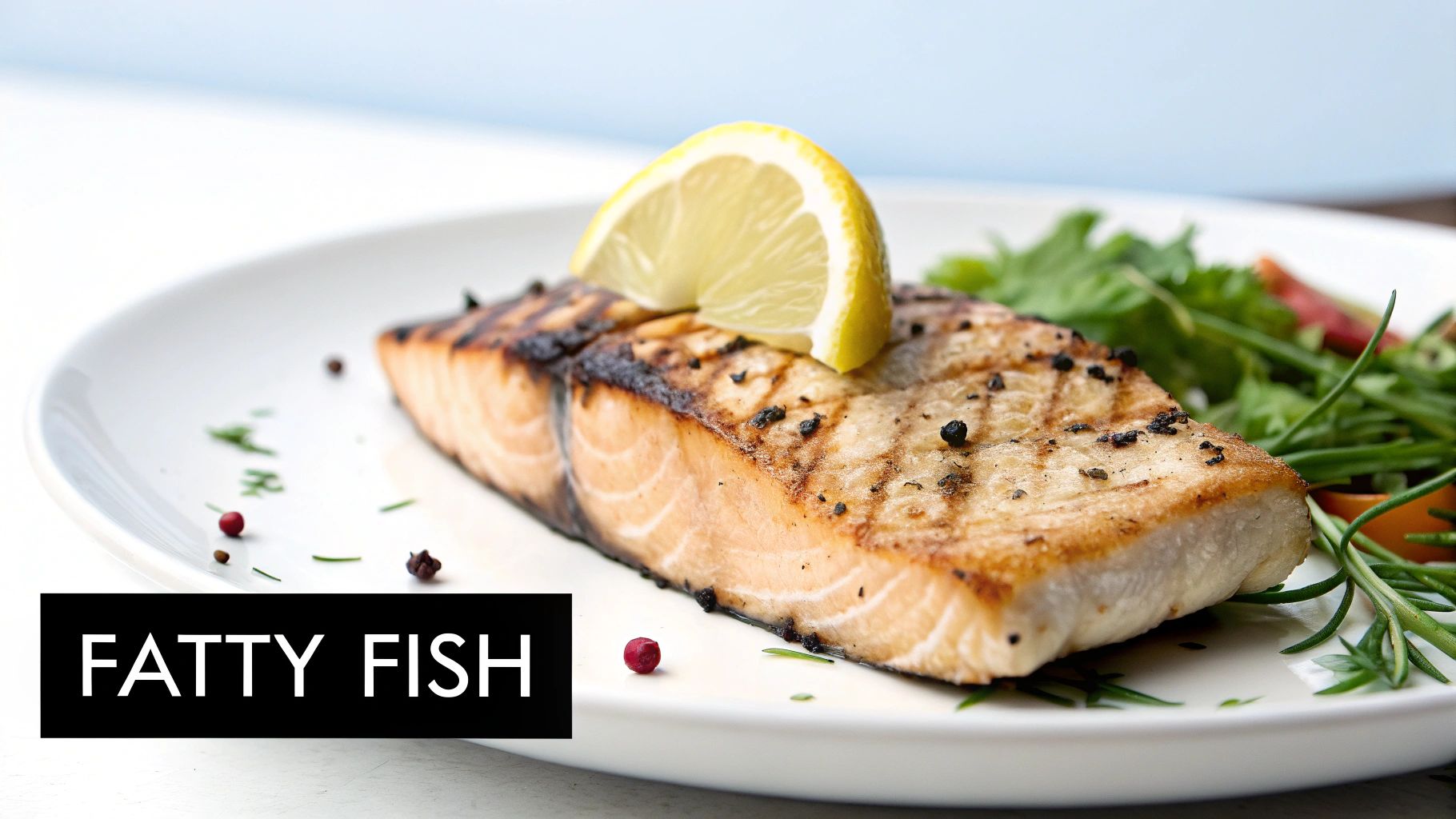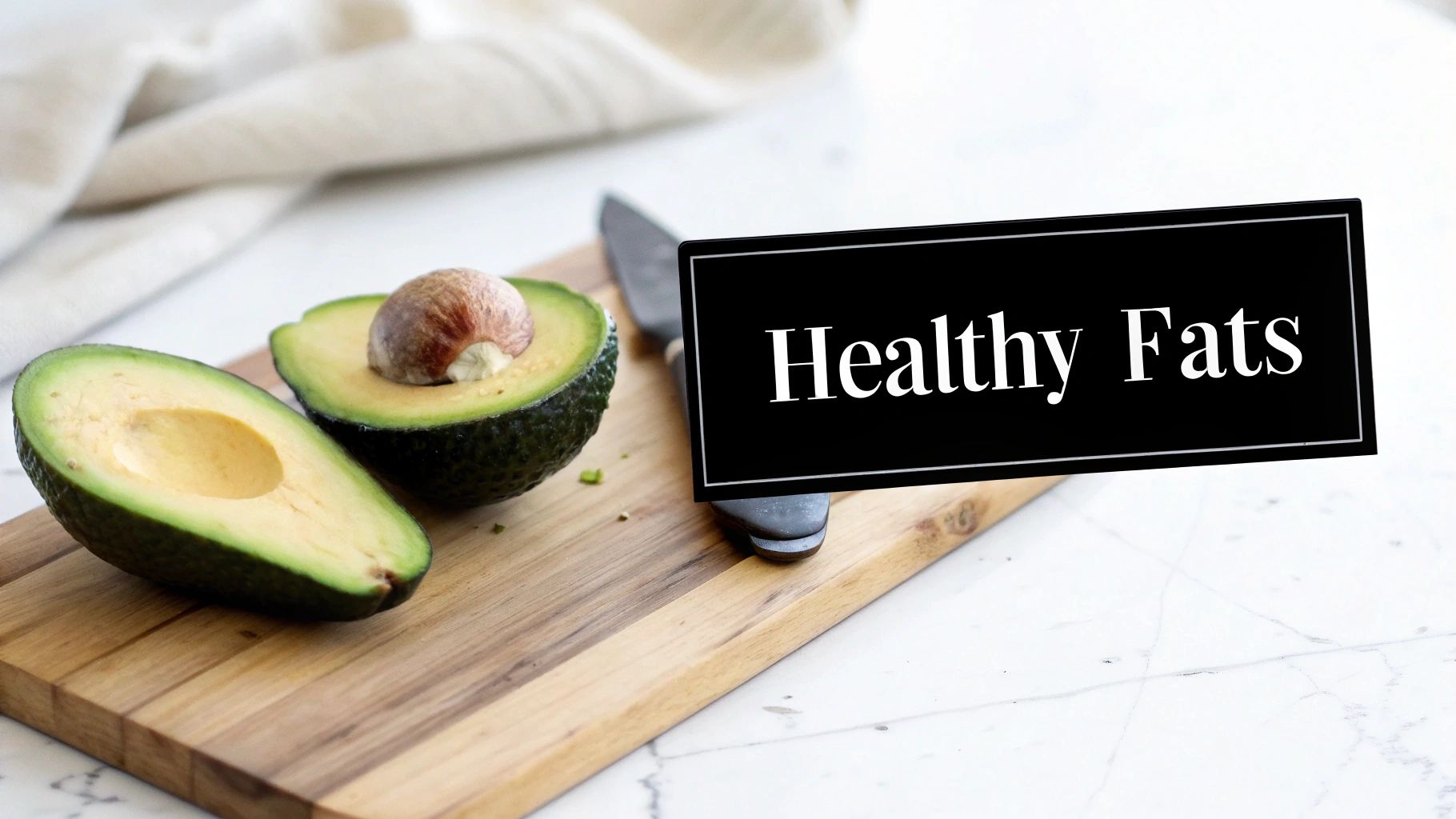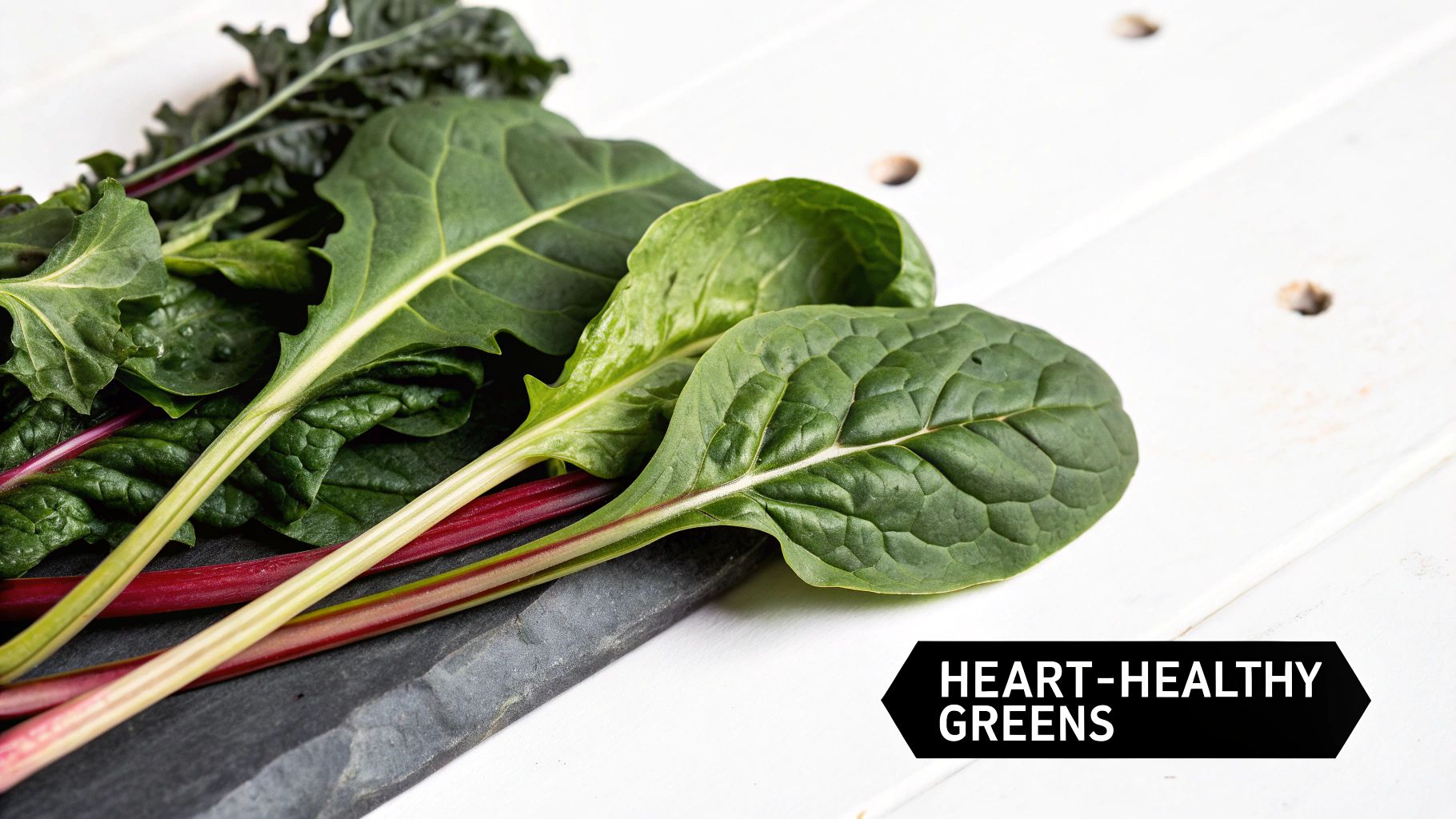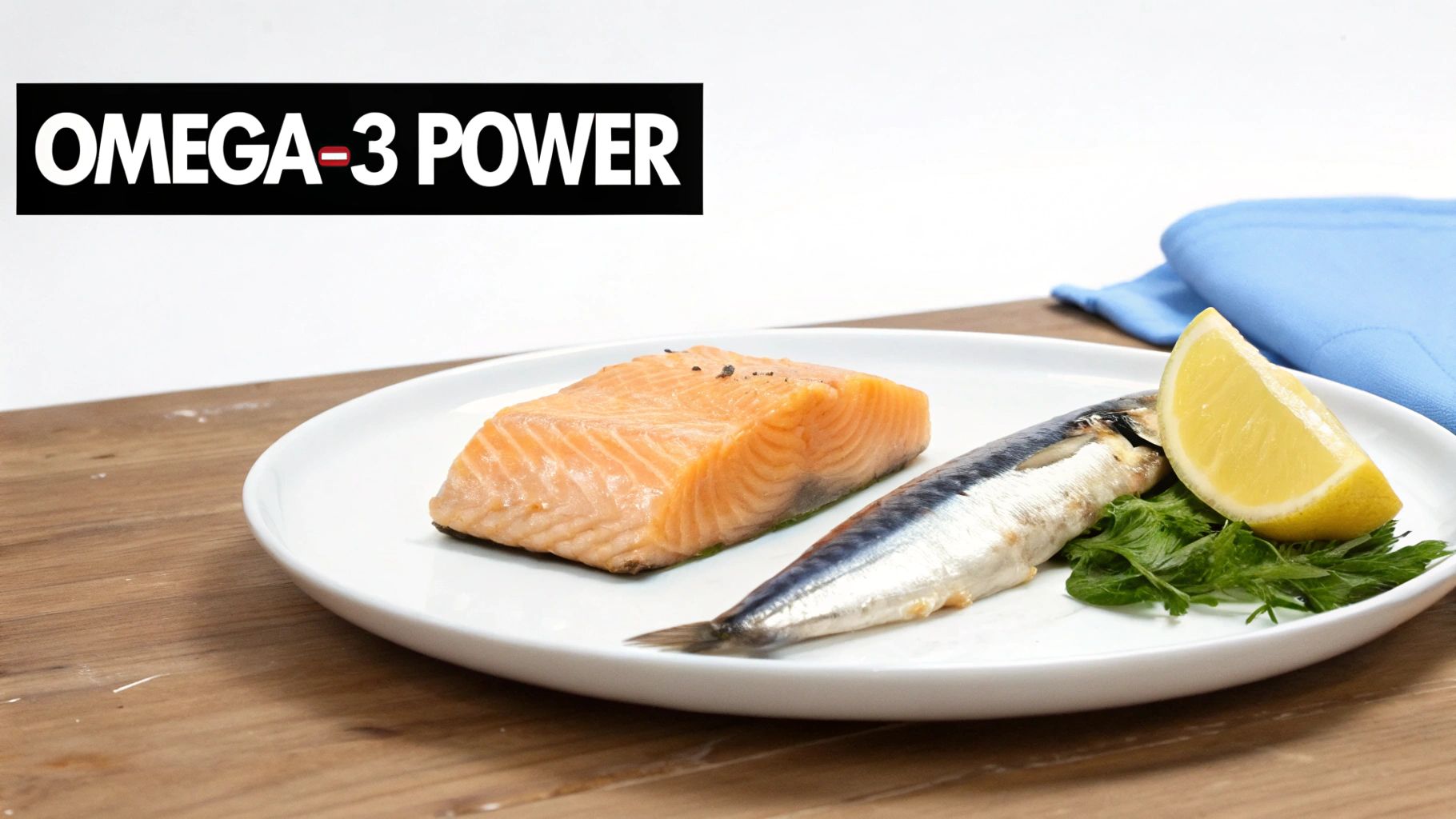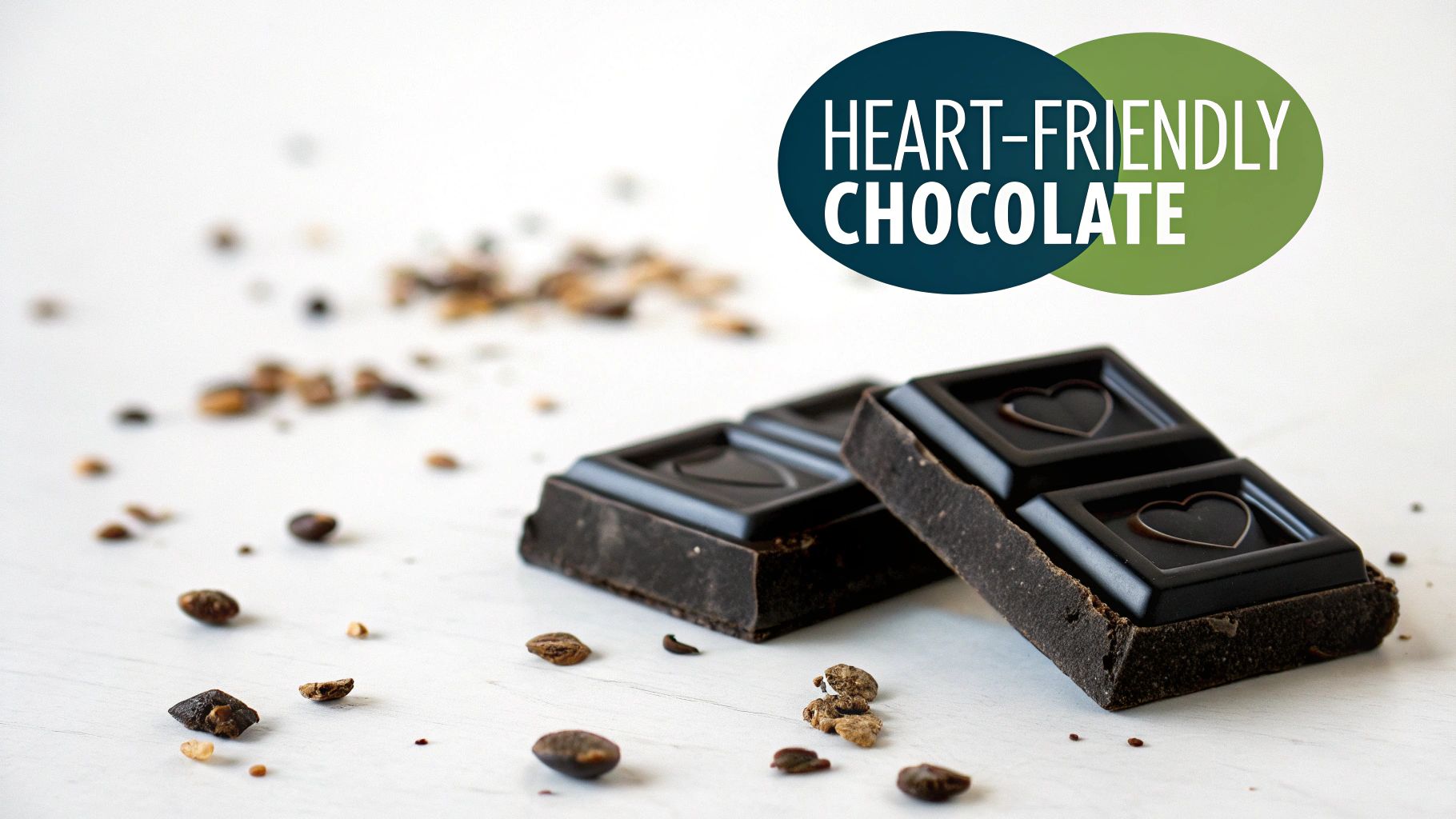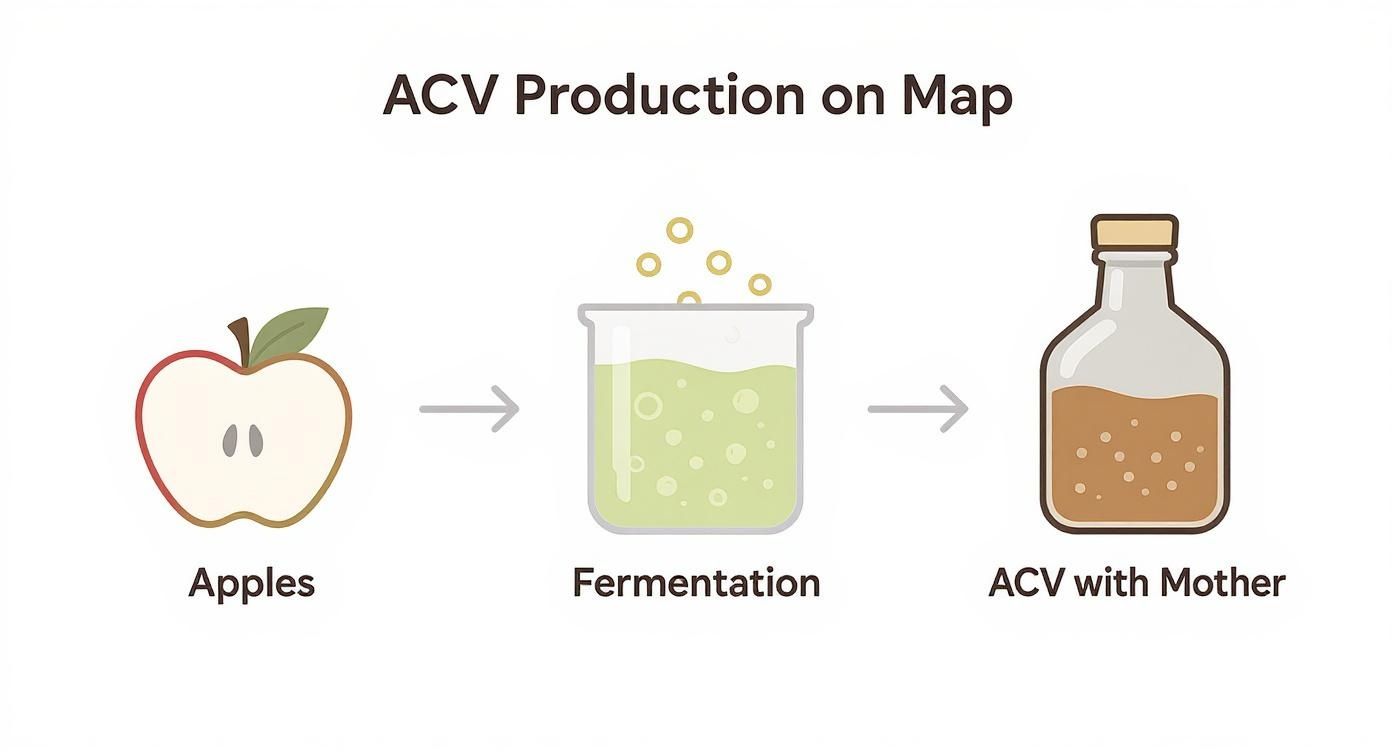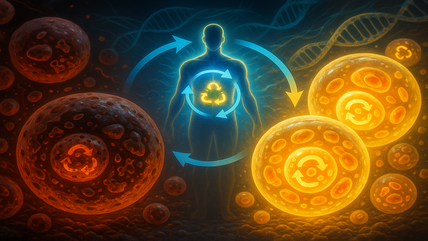Omega-3 fatty acids are essential polyunsaturated fats that your body cannot produce on its own, making them a critical component of a healthy diet. They play a pivotal role in numerous physiological functions, including supporting brain health, maintaining cardiovascular function, and regulating inflammation. While many people turn to supplements, obtaining these vital nutrients directly from foods high in omega 3 offers a synergistic blend of vitamins, minerals, and other beneficial compounds that work together to enhance overall well-being. A food-first approach ensures you're not just isolating one nutrient but are benefiting from a complete nutritional package.
This guide is designed to be your definitive resource for identifying and integrating the most potent omega-3 sources into your daily life. We move beyond simple lists to provide a comprehensive breakdown of the top 10 scientifically-backed options, spanning both marine and plant-based powerhouses. For each food, you'll find specific details on its omega-3 content, distinguishing between the crucial types: ALA (alpha-linolenic acid), EPA (eicosapentaenoic acid), and DHA (docosahexaenoic acid).
We will explore everything from wild-caught salmon and nutrient-dense sardines to versatile flaxseeds and walnuts. You will discover practical serving suggestions, simple meal ideas, and smart swaps to effortlessly boost your intake. Furthermore, we will address important considerations like sustainability and safety to help you make informed choices. This listicle provides the actionable insights you need to harness the benefits of omega-3s, fueling your body and mind with every delicious and thoughtfully chosen meal. Let’s dive in.
1. Salmon
Salmon is often the first food that comes to mind when discussing foods high in omega 3, and for good reason. This popular fatty fish is an exceptional source of the marine-based omega-3s, eicosapentaenoic acid (EPA) and docosahexaenoic acid (DHA), which are crucial for brain function, heart health, and reducing inflammation.
A single 3-ounce (85g) serving of cooked salmon can deliver a potent dose of 1,500-2,000 mg of combined EPA and DHA. This amount easily meets and often exceeds the daily recommendations set by major health organizations, such as the American Heart Association, which advocates for regular fish consumption to support cardiovascular wellness. The high concentration of these beneficial fats in salmon makes it a cornerstone of heart-healthy eating patterns like the Nordic and Mediterranean diets.
Omega-3 Content and Sourcing
The omega-3 content in salmon can vary depending on its origin. While both are excellent choices, there are slight differences:
- Wild-Caught Salmon: Species like Alaskan Sockeye and King salmon typically have a higher concentration of omega-3s and a leaner profile due to their natural diet of smaller fish and krill.
- Farmed Salmon: Atlantic salmon, commonly farmed in regions like Norway and Scotland, is also rich in omega-3s. The content is influenced by the composition of their feed, which is often fortified to ensure high levels of EPA and DHA.
How to Maximize Benefits
To get the most out of this nutrient-dense fish, consider these practical tips:
- Cooking Methods: Preserve the delicate omega-3 fats by using gentle cooking methods like baking, poaching, or grilling instead of deep-frying.
- Serving Frequency: Aim for two to three servings of fatty fish like salmon per week to consistently meet your omega-3 needs.
- Sustainable Choices: Look for certifications like the Marine Stewardship Council (MSC) for wild-caught or Aquaculture Stewardship Council (ASC) for farmed to ensure you are making an environmentally responsible choice. You can explore the benefits and safe use of salmon and other sources to better understand your options. Learn more about the best omega-3 fatty acids foods and their safe use on healthdigest.blog.
2. Mackerel
Often overshadowed by salmon, mackerel is a nutritional powerhouse and one of the most potent foods high in omega 3. This oily fish delivers an exceptionally high concentration of the marine-based omega-3s, eicosapentaenoic acid (EPA) and docosahexaenoic acid (DHA), which are vital for supporting cardiovascular function, promoting brain health, and fighting systemic inflammation.
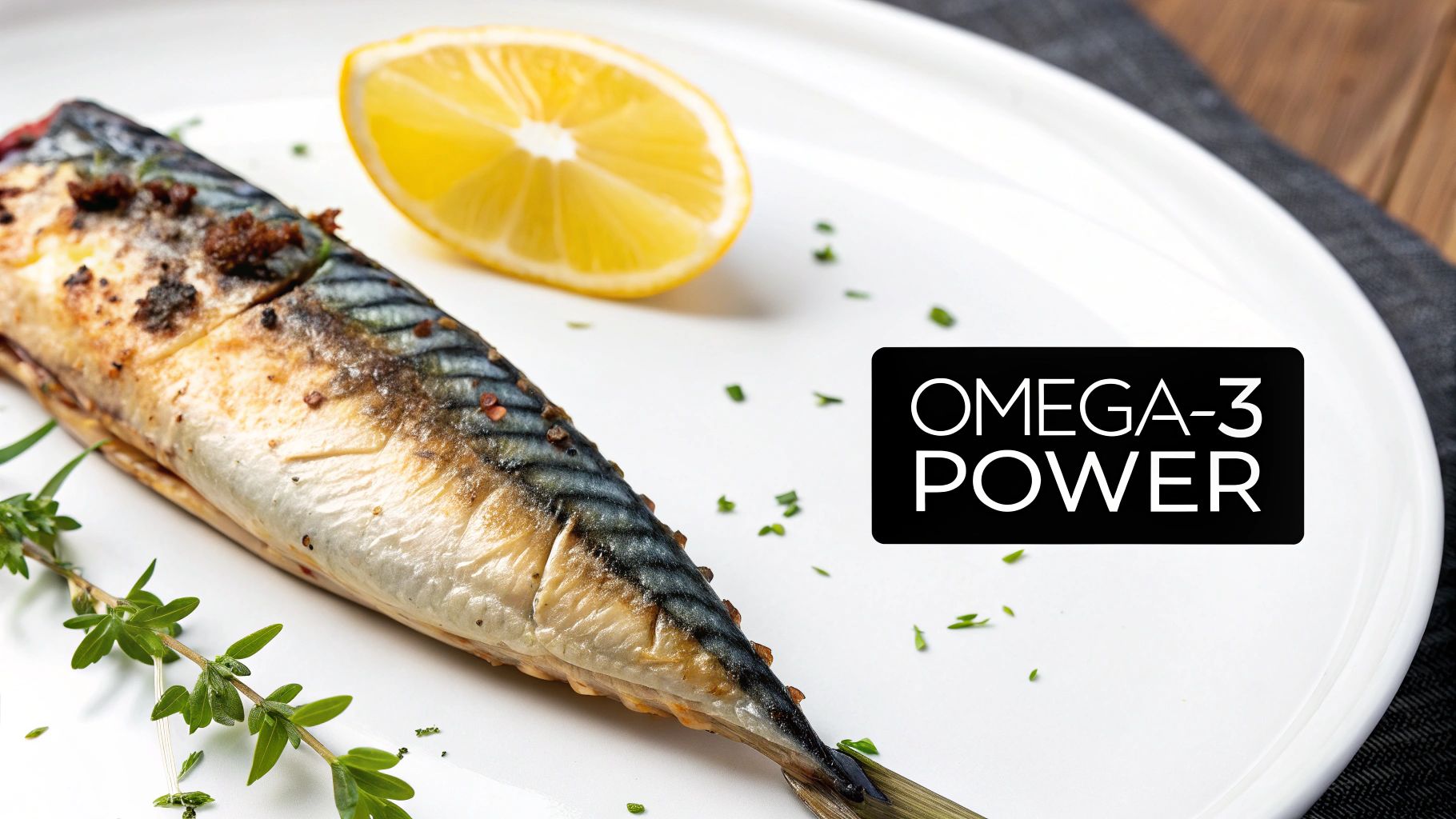
A modest 3-ounce (85g) serving of cooked Atlantic mackerel can provide an impressive 2,500-2,900 mg of combined EPA and DHA. This amount significantly surpasses the daily recommendations from most health organizations, making it a highly efficient way to boost your omega-3 intake. Its prominent role in various global cuisines, from Japanese saba to its use in the heart-healthy Mediterranean diet, underscores its value as a nutrient-dense food.
Omega-3 Content and Sourcing
The type of mackerel plays a role in its omega-3 levels, with smaller species generally being more sustainable and lower in mercury.
- Atlantic Mackerel: This smaller variety is extremely rich in omega-3s and is considered a "best choice" for sustainability and low mercury content by organizations like the Monterey Bay Aquarium Seafood Watch.
- Spanish and King Mackerel: These larger species also contain omega-3s but are known to have higher levels of mercury. Health authorities often advise pregnant women, nursing mothers, and young children to limit or avoid these varieties.
How to Maximize Benefits
Mackerel has a rich, distinct flavor that can be easily balanced with the right preparation. Consider these tips to enjoy it fully:
- Flavor Pairing: The strong flavor of mackerel pairs well with acidic ingredients. Try grilling or broiling it with a squeeze of fresh lemon, a tomato-based sauce, or a vinegar-based marinade to cut through the richness.
- Cooking Methods: Gentle cooking methods like grilling, baking, or pan-searing help preserve its delicate fats. Avoid overcooking to maintain a moist, flaky texture.
- Convenient Options: Canned mackerel is an excellent, affordable, and convenient alternative to fresh. It is often packed in olive oil or brine and is perfect for adding to salads, pasta dishes, or creating savory spreads.
3. Sardines
Don’t let their small size fool you; sardines are a nutritional powerhouse and one of the most potent foods high in omega 3. These oily fish are an exceptional source of marine-based EPA and DHA, critical for reducing inflammation, supporting cognitive function, and maintaining heart health. Their affordability and long shelf life make them an incredibly accessible option for boosting your omega-3 intake.
A single 3.75-ounce (106g) can of sardines, drained, can provide an impressive 1,300-1,900 mg of combined EPA and DHA. This amount comfortably surpasses the daily recommendations from most health organizations, establishing sardines as a key component in health-promoting dietary patterns like the Mediterranean diet, where they are celebrated for their nutritional benefits.

Omega-3 Content and Sourcing
Sardines are not only rich in omega-3s but also a more sustainable seafood choice due to their low position on the food chain and rapid reproduction rates.
- Nutrient Profile: Sardines are typically consumed whole, including the soft, edible bones and skin. This provides a significant bonus of calcium and vitamin D, which work alongside omega-3s to support bone density and overall health.
- Canned Varieties: Most sardines are sold canned. When selecting a product, consider the packing liquid. Those packed in olive oil or water are generally healthier choices than those in soybean or other vegetable oils, which can be high in omega-6 fatty acids.
How to Maximize Benefits
Incorporating these nutrient-dense fish into your diet is simple and versatile. Consider these tips to get the most from every can:
- Preparation: Mash sardines with a fork and mix with avocado or Greek yogurt for a healthy spread on whole-grain toast. Add them to salads for a protein and omega-3 boost, or toss them into pasta dishes with garlic, lemon, and herbs.
- Serving Frequency: Including sardines in your diet one to two times per week is an effective strategy to meet your omega-3 requirements consistently.
- Bone-In for Calcium: Opt for bone-in varieties whenever possible. The tiny, soft bones are an excellent, highly absorbable source of calcium, crucial for preventing osteoporosis. You can explore the benefits and safe use of sardines and other sources to better understand your options. Learn more about the best omega-3 fatty acids foods and their safe use on healthdigest.blog.
4. Herring
Herring is a small, oily fish that punches well above its weight when it comes to foods high in omega 3. A dietary staple in Northern European and Scandinavian cultures for centuries, herring is an outstanding source of the marine-based omega-3s, eicosapentaenoic acid (EPA) and docosahexaenoic acid (DHA), which are vital for cardiovascular function, cognitive health, and managing inflammation.
A single 3-ounce (85g) serving of Atlantic herring provides approximately 1,700-2,000 mg of combined EPA and DHA. This potent concentration not only meets but often surpasses the daily omega-3 recommendations from health authorities. Its affordability and high nutritional value make it a cornerstone of traditional diets like the Nordic diet, celebrated for its heart-protective benefits.
Omega-3 Content and Sourcing
Herring is prized for its consistent and high omega-3 levels, largely due to its natural diet in cold ocean waters. It is almost always wild-caught, making it a reliable and natural source of beneficial fats.
- Atlantic Herring: This is the most common species, found in the North Atlantic. It is exceptionally rich in both EPA and DHA.
- Pacific Herring: Found in the North Pacific, this species also offers a robust omega-3 profile, making it another excellent choice for boosting your intake.
How to Maximize Benefits
Herring is often sold pickled, smoked, or canned, making it a convenient and versatile option. To enjoy its benefits, consider these tips:
- Preparation Methods: Herring is delicious when grilled or baked fresh with herbs like dill. If you choose pickled varieties, you can rinse them gently to reduce the sodium content before serving.
- Serving Suggestions: Try classic preparations like pickled herring with onions and whole-grain bread, or add smoked herring (kipper) to salads for a boost of flavor and nutrients.
- Sustainable Choices: Herring populations are generally well-managed and considered a sustainable seafood choice. Look for products with certifications like the Marine Stewardship Council (MSC) to support responsible fishing practices.
5. Anchovies
Though small in size, anchovies are one of the most concentrated foods high in omega 3, delivering a powerful nutritional punch. These tiny, oily fish provide a significant amount of the beneficial marine-based omega-3s, eicosapentaenoic acid (EPA) and docosahexaenoic acid (DHA). Their rich, savory flavor has made them a staple in Mediterranean cuisine for centuries, where they add depth and complexity to sauces, dressings, and countless other dishes.
A single 2-ounce (57g) serving of canned anchovies, drained, can provide approximately 1,200 mg of combined EPA and DHA. This impressive amount easily helps meet daily omega-3 recommendations, supporting cardiovascular health, brain function, and inflammatory response. Because they are consumed whole, anchovies are also an excellent source of calcium and vitamin D, which are vital for bone health.
Omega-3 Content and Sourcing
Anchovies are a sustainable and nutrient-dense choice. Their short lifespan and position at the bottom of the food chain mean they are naturally low in contaminants like mercury.
- Wild-Caught: Nearly all anchovies are wild-caught from oceans around the world, including the Mediterranean Sea and the Pacific Ocean.
- Preparation: They are most commonly found cured in salt and packed in oil or sold as a paste. Both forms retain their high omega-3 content, making them a convenient pantry staple.
How to Maximize Benefits
To incorporate these flavorful fish into your diet and reap their omega-3 benefits, consider these simple strategies:
- Flavor Enhancer: Use anchovies as a seasoning rather than a main protein. A small amount minced into pasta sauces, stews, or salad dressings provides a rich umami flavor without an overtly fishy taste.
- Sodium Control: For canned varieties packed in salt, a quick rinse under cold water can significantly reduce the sodium content before use.
- Easy Integration: Anchovy paste is a great alternative for those new to the flavor. It blends seamlessly into recipes, providing all the nutritional benefits in an easy-to-use form. A classic Caesar salad dressing or a Mediterranean tapenade are excellent starting points.
6. Trout
Often found in freshwater rivers and lakes, trout is another excellent fatty fish that ranks high among foods high in omega 3. Its mild, delicate flavor makes it a versatile and approachable option for those who may find other oily fish, like salmon or mackerel, too strong. It provides a significant amount of the beneficial marine-based omega-3s, EPA and DHA, supporting cognitive function and cardiovascular health.
A standard 3-ounce (85g) serving of cooked trout contains approximately 800-1,200 mg of combined EPA and DHA. This substantial amount helps individuals meet their weekly omega-3 targets, making trout a valuable and often more affordable alternative to other popular fatty fish. Its accessibility and pleasant taste have made it a staple in various culinary traditions, from rustic mountain cuisine to modern health-conscious restaurants.
Omega-3 Content and Sourcing
The omega-3 profile of trout can differ based on its environment and diet, with notable distinctions between wild and farmed varieties:
- Farmed Trout: Farm-raised trout, especially rainbow trout, often has a higher and more consistent omega-3 content. This is because their diet is carefully managed and fortified with nutrients to ensure a rich EPA and DHA profile.
- Wild-Caught Trout: Wild trout, such as lake trout from the Great Lakes, is also a fantastic source. Its omega-3 levels are influenced by its natural diet of insects and smaller fish, which can cause some variability.
How to Maximize Benefits
To fully enjoy the taste and nutritional advantages of trout, consider these simple and effective tips:
- Cooking Methods: Gentle cooking preserves its delicate fats. Pan-searing with a little olive oil, baking with herbs and lemon, or grilling are ideal methods that enhance its flavor without compromising its omega-3 content.
- Serving Frequency: Including two to three servings of fatty fish like trout in your weekly meal plan is a great strategy for consistently supplying your body with essential omega-3s.
- Sustainable Choices: When purchasing farmed trout, look for certifications from organizations like the Aquaculture Stewardship Council (ASC) to support responsible and environmentally sound aquaculture practices. This ensures you are making a choice that is good for both your health and the planet.
7. Flaxseeds
Flaxseeds are a powerhouse of plant-based nutrition and one of the best vegan foods high in omega 3. These tiny seeds are a leading source of alpha-linolenic acid (ALA), the essential fatty acid that serves as a precursor to the long-chain omega-3s, EPA and DHA. While the body's conversion of ALA to these marine-based forms is limited, consuming flaxseeds directly contributes to overall omega-3 intake and offers unique benefits from its other components like fiber and lignans.
A single tablespoon (7g) of ground flaxseed provides approximately 1,600 mg of ALA, which significantly surpasses the daily adequate intake recommendations for most adults. This makes flaxseeds an invaluable ingredient for those following vegetarian or vegan diets, or anyone looking to diversify their omega-3 sources beyond fish. Their rich ALA content supports cardiovascular health and helps modulate inflammatory responses in the body.
Omega-3 Content and Absorption
To unlock the full nutritional value of flaxseeds, they must be consumed in the right form. The hard outer shell of whole flaxseeds makes them difficult to digest, meaning they can pass through your system without releasing their beneficial oils.
- Ground Flaxseeds: Grinding the seeds breaks down the tough exterior, allowing your body to absorb the ALA and other nutrients. You can buy pre-ground flaxseed (often called flax meal) or grind them yourself in a coffee grinder for maximum freshness.
- ALA Conversion: The body converts a small percentage of ALA into EPA and DHA. While not a direct substitute for marine sources, consistent intake of ALA from foods like flaxseeds is crucial for maintaining foundational omega-3 levels. This is particularly relevant when considering sources of plant-based nutrition. You can learn more about the roles of different plant proteins and fats on healthdigest.blog.
How to Maximize Benefits
Incorporating flaxseeds into your diet is simple with these practical strategies:
- Proper Storage: Store ground flaxseeds in an airtight container in the refrigerator or freezer to protect the delicate omega-3 fats from oxidation and rancidity.
- Serving Suggestions: Aim for one to two tablespoons daily. Easily add ground flaxseed to smoothies, sprinkle it over oatmeal or yogurt, or mix it into salad dressings and baked goods.
- Stay Hydrated: Flaxseeds are high in soluble fiber, which absorbs water. Be sure to drink plenty of fluids throughout the day when you increase your flaxseed intake to support digestive health.
8. Chia Seeds
Once a staple of ancient Aztec and Mayan diets, chia seeds have re-emerged as a modern superfood and one of the best plant-based foods high in omega 3. These tiny seeds are exceptionally rich in alpha-linolenic acid (ALA), the foundational plant-based omega-3 fatty acid. Their unique ability to absorb liquid and form a gel makes them a versatile ingredient in healthy cooking.
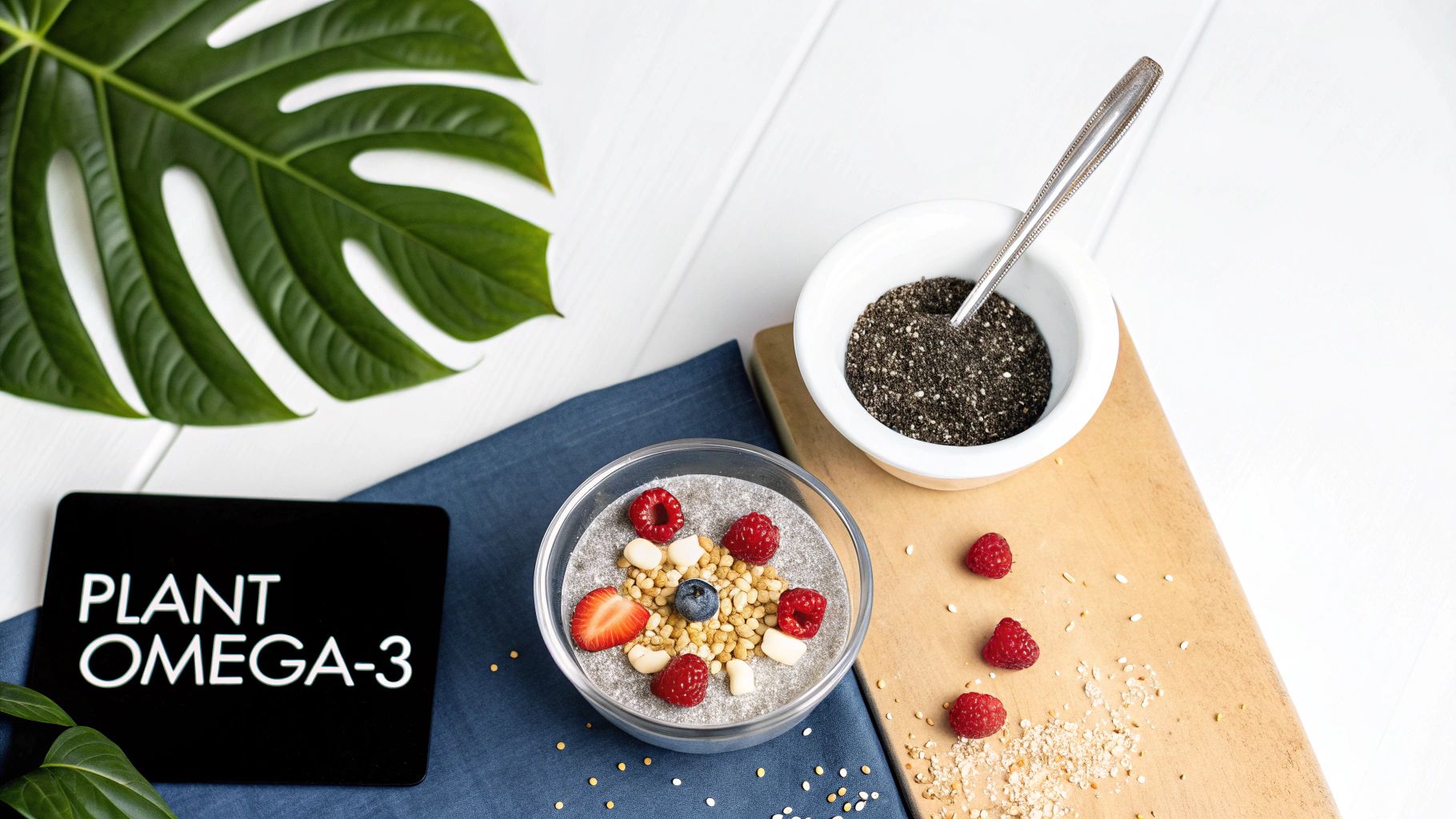
A single one-ounce (28g, or about two tablespoons) serving of chia seeds provides an impressive 5,000 mg of ALA. This amount significantly surpasses the daily ALA recommendations for most adults, making it a powerful choice for those on plant-forward or vegan diets. The popularity of chia pudding and its inclusion in smoothies and protein powders by brands like Vega highlights its mainstream acceptance as a nutrient-dense powerhouse.
Omega-3 Content and Sourcing
Chia seeds are a reliable and concentrated source of plant-based omega-3s, but their profile differs from marine sources:
- ALA Dominance: Chia seeds contain almost exclusively ALA. The body must convert ALA into the more active forms of EPA and DHA, though this conversion process is limited.
- Nutrient Profile: Beyond omega-3s, chia seeds are packed with fiber, protein, calcium, and antioxidants, contributing to digestive health, satiety, and bone strength. The high fiber content is particularly noteworthy. Discover more about high-fiber eating plans and their benefits on healthdigest.blog.
How to Maximize Benefits
To get the most out of these tiny but mighty seeds, incorporate them into your diet with these tips:
- Soak Before Use: For better digestion and nutrient absorption, soak chia seeds in water, milk, or juice for at least 30 minutes until they form a gel.
- Serving Suggestions: Add them to oatmeal, yogurt, smoothies, and salads. Use them as an egg substitute in baking by mixing one tablespoon of ground chia seeds with three tablespoons of water.
- Proper Hydration: Due to their high fiber and absorbent nature, it's crucial to drink plenty of water when consuming chia seeds to support digestive regularity.
9. Walnuts
Walnuts are a standout plant-based option when it comes to foods high in omega 3. Unlike marine sources, these popular tree nuts are exceptionally rich in alpha-linolenic acid (ALA), the essential omega-3 fatty acid that the body can convert into EPA and DHA, albeit in small amounts. Their convenience and versatility make them a simple yet powerful addition to any diet aimed at improving heart and brain health.
Just one ounce of walnuts, which is about 14 halves, provides an impressive 2,570 mg of ALA. This single serving surpasses the daily adequate intake recommendations for most adults, establishing walnuts as a cornerstone food in health-conscious eating patterns. Landmark studies like the PREDIMED trial have consistently linked walnut consumption with improved cardiovascular markers, reinforcing their role in the heart-healthy Mediterranean diet.
Omega-3 Content and Sourcing
Walnuts are a reliable and potent source of plant-based omega-3s, but quality matters.
- Plant-Based Power: Walnuts are one of the most significant plant sources of ALA. The body uses ALA for energy, but it's also a precursor to the long-chain omega-3s, EPA and DHA, that are vital for cellular health.
- Storage is Key: The polyunsaturated fats in walnuts, including omega-3s, are delicate and can go rancid if exposed to heat, light, or air. To preserve their nutritional value, store them in an airtight container in the refrigerator or freezer.
How to Maximize Benefits
Incorporating this nutrient-dense nut into your daily routine is easy with these practical tips:
- Daily Dose: Aim for a 1-ounce (28g) serving each day. This can be a simple handful as a snack, or you can add them to other meals for a nutritional boost.
- Versatile Pairings: Sprinkle chopped walnuts over oatmeal, yogurt, or salads. They also add a satisfying crunch and richness to baked goods like muffins and bread.
- Synergistic Combinations: Pair walnuts with antioxidant-rich foods like berries. The combination of healthy fats, fiber, and polyphenols offers comprehensive benefits for cognitive function and inflammation reduction.
10. Hemp Seeds
Hemp seeds are gaining well-deserved recognition among foods high in omega 3, particularly for those following plant-based diets. These small but mighty seeds offer a complete protein source and an impressive profile of essential fatty acids, primarily the plant-based omega-3 alpha-linolenic acid (ALA). Their nutty flavor and versatile nature make them an easy and nutritious addition to any meal.
A standard serving of three tablespoons (30g) of hulled hemp seeds, often called hemp hearts, provides approximately 3,000 mg of ALA. This amount significantly contributes to the daily recommended intake for plant-based omega-3s. What makes hemp seeds stand out is their nearly optimal 3:1 ratio of omega-6 to omega-3 fatty acids, a balance that is thought to help promote a healthy inflammatory response in the body.
Omega-3 Content and Sourcing
The nutritional value of hemp seeds is quite consistent, but how you buy them can affect their use:
- Hulled Hemp Seeds (Hemp Hearts): These are the most common form, with the hard outer shell removed. They are soft, easy to digest, and perfect for sprinkling on meals. Brands like Manitoba Harvest and Nutiva are popular sources.
- Hemp Seed Oil: Cold-pressed from the seeds, this oil is a concentrated source of ALA and is best used unheated in dressings or drizzled over finished dishes to preserve its delicate fats.
- Hemp Protein Powder: Made from ground hemp seeds, this powder provides omega-3s along with fiber and a complete amino acid profile, making it a favorite among vegan athletes.
How to Maximize Benefits
To fully integrate the nutritional power of hemp seeds into your diet, follow these simple tips:
- Daily Intake: Aim for two to three tablespoons daily to consistently meet your ALA needs and benefit from their protein and minerals.
- Easy Additions: Sprinkle hemp hearts over salads, oatmeal, yogurt, or blend them into smoothies for a creamy texture and nutrient boost.
- Proper Storage: Once opened, store hemp seeds and their oil in the refrigerator to protect the polyunsaturated fats from going rancid.
- Fresh Grinding: For maximum nutrient absorption, you can grind whole hemp seeds just before use, though hulled seeds offer excellent bioavailability.
Top 10 Omega-3 Foods Comparison
| Item | Implementation complexity 🔄 | Resource & availability ⚡ | Expected omega‑3 impact 📊 | Ideal use cases 💡 | Key advantages ⭐ |
|---|---|---|---|---|---|
| Salmon | 🔄🔄 — requires cooking, refrigeration | ⚡⚡ — widely available but pricier | 1,500–2,000 mg EPA/DHA per 3 oz; ⭐⭐⭐⭐ | Main meals (2–3x/week), heart & brain support | Highly bioavailable EPA/DHA; rich protein & vitamins |
| Mackerel | 🔄🔄 — simple cooking; strong flavor | ⚡⚡ — affordable but variable availability | 3,000–4,000 mg EPA/DHA per 3 oz; ⭐⭐⭐⭐⭐ | Budget high‑omega meals, grilled or canned | Highest EPA/DHA per serving; sustainable reproduction |
| Sardines | 🔄 — ready canned or quick grill | ⚡⚡⚡ — very affordable, shelf‑stable | 1,500–2,000 mg EPA/DHA per 3 oz; ⭐⭐⭐⭐ | Quick snacks/meals, calcium boost (eat bones) | Very sustainable, low mercury, long shelf life |
| Herring | 🔄🔄 — pickled/smoked or fresh cooking | ⚡⚡ — common in some regions, canned options | 1,500–2,000 mg EPA/DHA per 3 oz; ⭐⭐⭐⭐ | Traditional Nordic dishes, canned/pickled use | High omega‑3 and antioxidants (astaxanthin) |
| Anchovies | 🔄 — used as seasoning rather than main | ⚡⚡⚡ — cheap, long shelf life | ~500–700 mg EPA/DHA per 1 oz (concentrated); ⭐⭐⭐ | Flavor enhancer (dressings, sauces), small portions | Intense umami, very low mercury, cost‑effective |
| Trout | 🔄🔄 — simple cooking, often farmed | ⚡⚡ — generally available, moderately priced | 800–1,500 mg EPA/DHA per 3 oz; ⭐⭐⭐ | Mild fish for those new to oily fish, versatile recipes | Milder flavor, often sustainably farmed, good protein |
| Flaxseeds | 🔄 — must grind for absorption | ⚡⚡⚡ — inexpensive, widely available | Vegan omega‑3 source for smoothies/baking | High fiber & lignans; cholesterol support | |
| Chia Seeds | 🔄 — soak or mix (no grinding needed) | ⚡⚡ — common but pricier than flax | ~5,000 mg ALA per oz; poor ALA→EPA/DHA conversion; ⭐⭐ | Puddings, smoothies, hydration & fiber boost | Very high ALA and fiber; long shelf life |
| Walnuts | 🔄 — ready to eat as snack or ingredient | ⚡⚡⚡ — widely available | ~2,500 mg ALA per oz; limited conversion; ⭐⭐⭐ | Snacking, salads, baking; cardiovascular diets | Polyphenols & arginine; well‑studied heart benefits |
| Hemp Seeds | 🔄 — light prep (grind optional) | ⚡⚡ — growing availability, costlier | ~3,000 mg ALA per 3 tbsp; poor conversion; ⭐⭐ | Smoothies, protein boost, vegan recipes | Complete protein, balanced omega‑3:6 ratio, GLA present |
Putting It All Together: Your Omega-3 Action Plan
Navigating the world of nutrition can often feel complex, but as we've explored, incorporating foods high in omega 3 into your diet is a straightforward and powerful step toward better health. This isn't about restrictive dieting or drastic overhauls; it's about making small, intentional upgrades that compound over time. From the potent EPA and DHA found in fatty fish like salmon and sardines to the foundational ALA offered by plant powerhouses like flaxseeds and walnuts, you now have a diverse toolkit to support your brain, heart, and overall well-being.
The journey to optimal health is built on consistency, not perfection. The key takeaway is that both marine and plant-based sources offer unique benefits. While fish provide the most bioavailable forms of omega-3s, seeds and nuts deliver them alongside fiber, antioxidants, and other vital micronutrients. A truly effective strategy embraces this diversity.
Your Actionable Next Steps
To transform this knowledge into tangible results, let’s move from reading to doing. Here is a simple, actionable framework to help you integrate these nutrient-dense foods into your weekly routine without feeling overwhelmed.
- The "Two-a-Week" Fish Rule: Aim for at least two 3.5-ounce servings of oily fish per week. To make this easy, schedule it. For example, "Tuna Tuesday" (using canned light tuna or fresh steaks) and "Salmon Saturday." Rotating your choices between salmon, mackerel, herring, and sardines will not only keep your meals interesting but also help minimize potential exposure to environmental contaminants like mercury.
- The "Daily Plant Power" Habit: Make one plant-based omega-3 source a non-negotiable part of your day. This could be as simple as adding a tablespoon of ground flaxseed to your morning oatmeal, blending chia seeds into a smoothie, or grabbing a small handful of walnuts for an afternoon snack. Find the easiest entry point in your existing routine and stick with it.
- Smart Swaps for a Seamless Boost: Think about enhancement rather than elimination. Instead of plain yogurt, top it with walnuts and hemp seeds. Swap a creamy salad dressing for one made with flaxseed oil. Instead of croutons on your soup, sprinkle it with toasted hemp seeds for a nutty crunch. These small changes add up significantly over a week.
Beyond the List: Embracing a Holistic Approach
Remember, these foods high in omega 3 do not work in a vacuum. Their benefits are magnified when they are part of a balanced, whole-foods-based diet rich in colorful vegetables, lean proteins, and complex carbohydrates. The synergistic effect of these nutrients is where the real magic happens.
Key Insight: Focusing on whole-food sources of omega-3s delivers more than just fatty acids. You're also getting a complete nutritional package, including high-quality protein from fish, essential minerals like selenium and iodine, and the gut-healthy fiber found in seeds and nuts. This holistic approach is far superior to relying on supplements alone.
By prioritizing these foods, you are taking a proactive stance on your health. You are investing in cognitive longevity, supporting your cardiovascular system, and providing your body with the anti-inflammatory tools it needs to thrive. The value extends beyond a single nutrient; it's about building a foundation for sustainable, long-term vitality. Start small this week. Pick one new food from our list, try one new recipe, and notice how you feel. This simple, empowered choice is the first step on a rewarding path to better health.
For more evidence-based guides and actionable wellness plans that cut through the noise, explore the resources at Health Digest. We specialize in breaking down complex nutritional science into practical, easy-to-follow advice, helping you build sustainable habits for a healthier life. Discover your next step at Health Digest.



